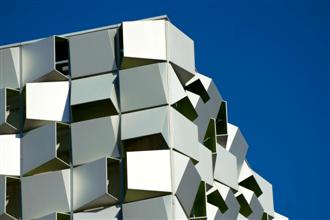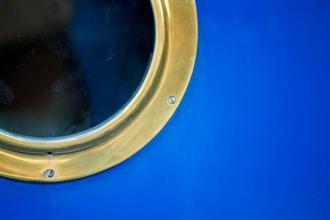Nikon 70-300mm f/4.5-5.6G AF-S VR Nikkor
Nikon 70-300mm f/4.5-5.6G AF-S VR Nikkor Performance
As is often the case with high ratio zooms, this lens starts off very sharp at 70mm. In fact the sharpness is excellent in the centre and very good towards the edges when shooting wide open.
Peak quality across the frame is achieved between f/5.6 and f/8 where sharpness is also excellent in the centre and very good towards the edges.
With the lens zoomed to 135mm the excellent sharpness in the centre is maintained at maximum aperture, but the quality towards the edges drops to fairly good levels. Stopping the lens down improves the clarity towards the edges, but it doesn't reach good levels until f/11.
At 300mm sharpness decreases somewhat and is only fairly good in the centre at f/5.6, and fair towards the edges. As the lens is stopped down, sharpness increases until f/11, where the clarity achieved is very good in the centre and good towards the edges.
| 70mm | 135mm |
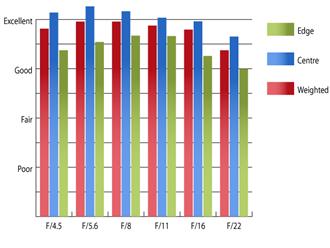 | 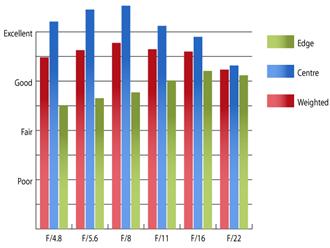 |
| 300mm | How to read our graphs |
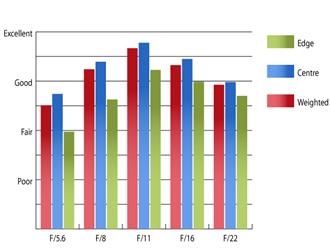 | The blue column represents readings from the centre of the picture frame at the various apertures and the green is from the edges. Averaging them out gives the red weighted column. The scale on the left side is an indication of actual image resolution. The taller the column, the better the lens performance. Simple. For this review, the lens was tested on a Nikon D700 using Imatest. |
At shorter focal lengths, chromatic aberrations are well controlled and won't pose an issue, even at large print sizes. However, at 300mm, levels of fringing towards the edges of the frame exceeds three pixel widths in size, which may be visible along high contrast edges.
| 70mm | 135mm |
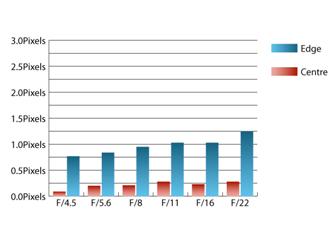 | 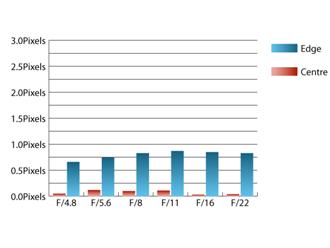 |
| 300mm | How to read our graphs |
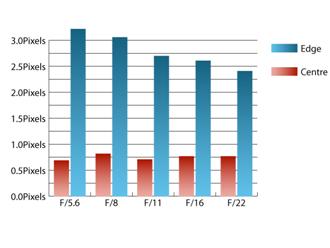 | Chromatic aberration is the lens' inability to focus on the sensor or film all colours of visible light at the same point. Severe chromatic aberration gives a noticeable fringing or a halo effect around sharp edges within the picture. It can be cured in software. Apochromatic lenses have special lens elements (aspheric, extra-low dispersion etc) to minimize the problem, hence they usually cost more. For this review, the lens was tested on a Nikon D700 using Imatest. |
2.37% barrel distortion is present at 70mm and 1.53% pincushion distortion at 300mm. For most applications, these mild levels of distortion won't pose any issues. It will only become apparent where there are straight lines parallel to the edges of the frame. If perfectly straight lines are paramount, the distortion should be simple enough to correct in image editing software afterwards as the distortion pattern is uniform across the frame.
A deep circular hood comes supplied with the lens, which does an excellent job of shielding the optics from extraneous light that may cause flare or loss of contrast. When shooting directly at a strong light source, this lens can be prone to a reduction of contrast, so care may need to be taken in those circumstances.
Add your message
Login required
Please login here or if you've not registered, you can register here. Registering is safe, quick and free.
Please login here or if you've not registered, you can register here. Registering is safe, quick and free.
photodo Stats
1102 lenses
428 MTF tests
74 in-depth photodo reviews
100+ users join each day
Help the lens community by reviewing or rating a lens today via our lens search
428 MTF tests
74 in-depth photodo reviews
100+ users join each day
Help the lens community by reviewing or rating a lens today via our lens search
Latest Lens Reviews
- Chinon 28mm f/2.8 Vintage Lens Review
- Canon EF 70-200mm f/4L IS II USM Lens Review
- Samyang AF 85mm f/1.4 EF Review
- Sigma 70mm f/2.8 DG Macro Art Review
- Samyang AF 24mm f/2.8 FE Review
- Meike 50mm f/1.7 Review
- Tamron 70-210mm f/4 Di VC USD Review
- Lensbaby Burnside 35mm f/2.8 Review
- Asahi Super Takumar 50mm f/1.4 Review
- Asahi Super-Multi-Coated Takumar 135mm f/3.5 Review






